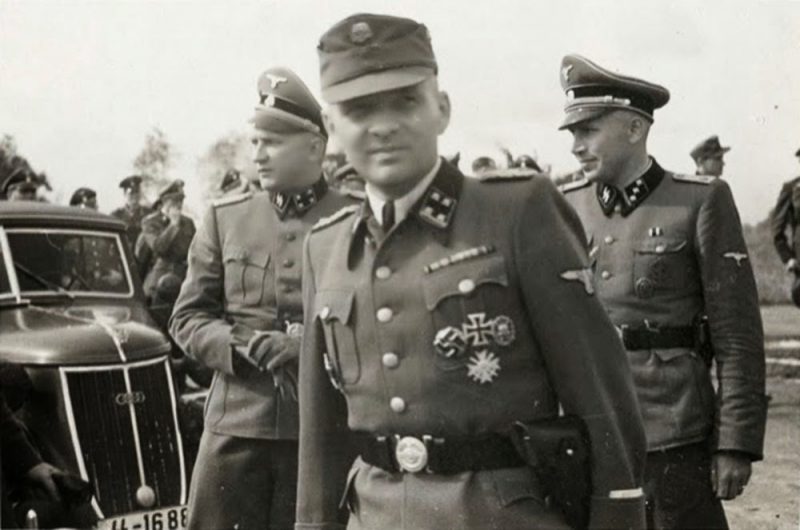History of Birkenau
Birkenau was a German concentration camp located approximately 60 miles southwest of Cracow, Poland in the town of Osweicim (in German Auschwitz).
Below: map of Poland showing the location of Auschwitz (a.k.a. Birkenau) (source: Bing.com)

It operated during World War Two. Officially Birkenau was part of the Auschwitz complex. The terms Auschwitz and Birkenau are used interchangeably. Nevertheless, although Auschwitz and Birkenau administratively were one unit, physically they were separate camps. They were located two miles apart. Birkenau was built to ease the overcrowding at the Auschwitz camp. Approximately 300 buildings, mostly barracks, were constructed at Birkenau. In the summer of 1944 Birkenau held about 90,000 prisoners, most of them Jews.
Birkenau was designed and built by SS Hauptsturmfuhrer (Captain) Karl Bischoff, the chief of the Auschwitz construction office, and the architect SS Rottenfuhrer (Corporal) Fritz Ertl. It was ordered built by Heinrich Himmler, Reichfuhrer of Germany and chief of the SS. The camp was deliberately designed not to sustain life. The initial plan was for one barrack to contain 550 prisoners. Later on that number was changed to 744.
Below: Blueprint for the “Prisoner of War Camp – Auschwitz” (source: Bing.com)

Below: Layout of Birkenau affixed on a map. (source: Bing.com)

The camp was built by 10,000 Soviet prisoners of war. This labor force was provided by the German army. On September 25, 1941 the OKW (Supreme Command of the German Army) ordered the transfer of up to 100,000 prisoners of war to Heinrich Himmler. Construction of the camp commenced in the autumn of 1941. Conditions were abominable. By the following spring only a few hundred of the original 10,000 prisoners sent to build the camp were still alive. The prisoners assigned to build the camp survived on the average two weeks.
Birkenau became the main venue for the extermination of the Jews, in accordance with the Nazi plan for the so-called “Final Solution” of the so-called “Jewish Question.” According to Rudolf Hoess, the commandant of Auschwitz/Birkenau from May 1940 to December 1943 and again from June to August 1944, two and half million persons were “executed and exterminated” at Auschwitz/Birkenau. (Later on Hoess reduced that number to 1,135,000.) Hoess personally witnessed and supervised these executions. The primary method of execution was by gassing, through administration of a chemical compound called Zyklon B.
Below: Zyklon B “Giftgas!” (poison) “Eerzeugnis der Deutschen Gesellschaft” (Product of German Society) (Source: Bing.com)
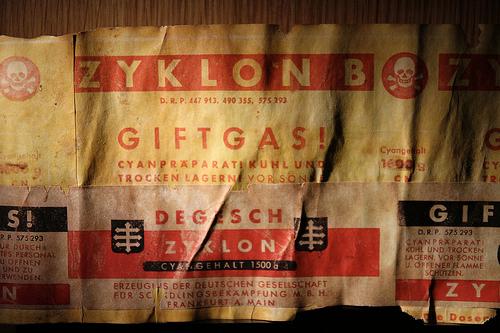
One of the companies that manufactured the Zyklon-B, Tesch and Stabenow of Hamburg (the other was Degesch of Dessau), furnished enough of the poison to exterminate two million persons. Hence, the Zyklon-B became a weapon of mass destruction.
Below: Pics of Rudolf Hoess, commandant of Auschwitz/Birkenau (Source: Bing.com)

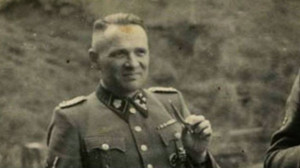
The victims were shipped to Birkenau by railroad, in so-called “transports.” Each transport contained up to 2,000 persons. These transports went directly into the camp. The transports were met by German SS guards and medical officers who ordered the passengers off the train and onto a so-called “ramp” where a selection process took place, to decide who was fit for work. Those deemed unfit were marked for immediate execution.
Below: Birkenau, 1944. A newly arrived transport, ca. 1944. They are divided into two groups: women and children (left) and men (right). The main watch tower is visible in the background. The men in uniforms in the foreground are SS officers, probably medical doctors. Barbed wire fencing and barracks are visible at the right. (source: Bing.com)

Below: A newly arrived transport, ca. 1944. At the right is the train. The main watch tower is visible in the background. The men in uniform are SS officers, probably medical officers. The men in striped clothing are inmates, most likely Jewish, who were assigned to “greet” the newcomers. Note the woman in the scarf in between the two SS officers, the woman with the white hat in the front of the pic holding an infant, and the man with no pants and missing a shoe. They and the rest of the transport were considered enemies of the Reich for whom there would be no mercy. (source: Bing.com)

Below: New arrivals at Birkenau, ca. 1944. The pictures speak for themselves. The letters DR affixed to the train cars stand for Deutsche Reichsbahn (German Railroad). (source: Bing.com)
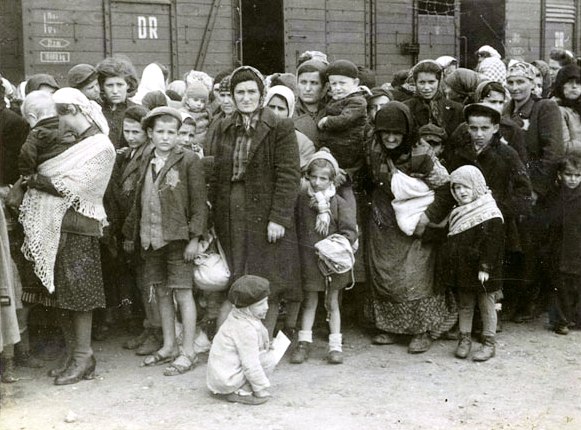
Below are pics showing (from top to bottom) 1. A section of the railroad tracks 2. The main watch tower and the railroad tracks (note the switch track which shunted transports to the “ramp”) 3. An actual box car used to transport victims 4. A hub cap on one of the wheels (on which is affixed the numbers 1913 and 1923 and the word Haspe). 5. A wide angle shot showing the so-called “ramp” area to the left where transports were unloaded and the initial selection process occurred.
1 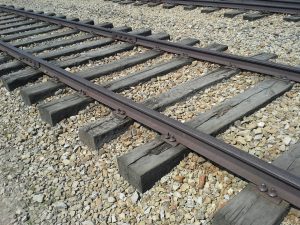
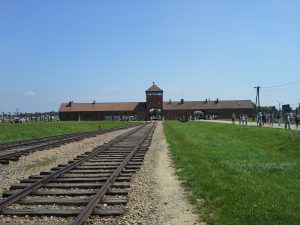

2
3 (above)
4 (below)
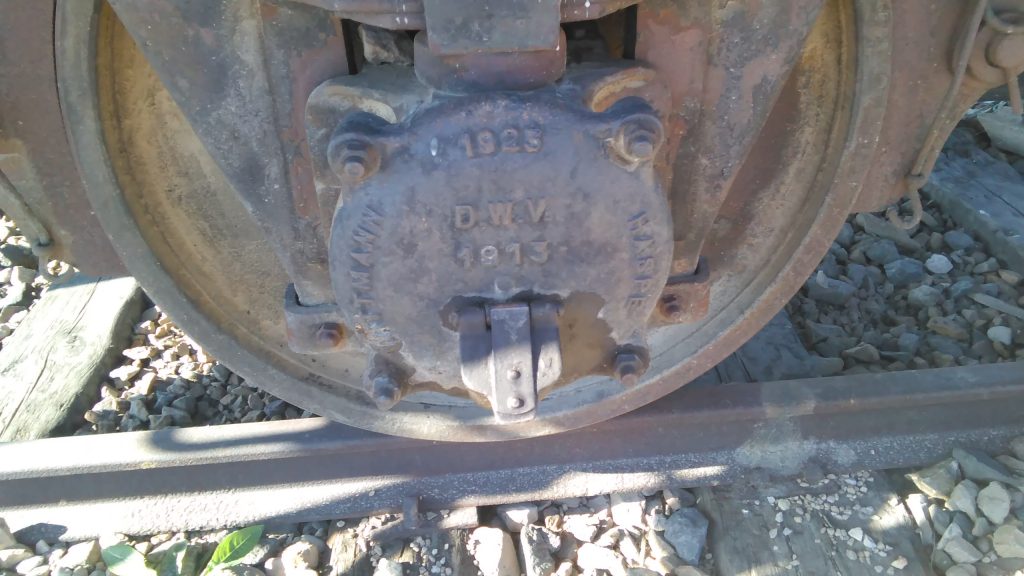
5
All children below the age of fifteen were killed. According to Hoess, between 20 and 30 percent were selected for work. Those not selected were marched in groups to the “chambers.”
Those too weak to go to the gas chambers were shot through the neck. Up to 3,000 persons could be stripped of their clothes and murdered in less then two hours.
The SS engaged in systematic looting. All victims were divested of their personal possessions. Auschwitz also contained a brothel. After being gassed, the bodies were searched for any valuables, including gold teeth which were pulled out of the mouths for use by the Reich. (In some locations, the Jews were robbed of their gold teeth before they were killed. For instance, in the prison in Minsk all the Jews had their gold bridgework, crowns and fillings pulled or broken out. This happened one or two hours before they were killed.) The bodies were then cremated and the remains dumped into mass graves (actually pits dug into the ground).
Below: Disposing of bodies at Birkenau, date unknown. (Note the barbed wire fence in the background, proof that this pic was taken at Birkenau) (source: Bing.com)

Below: pics of places where remains were deposited


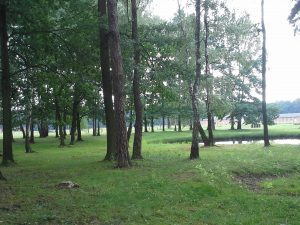
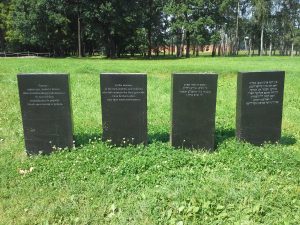
Cremations took place under the supervision of three SS non-commissioned officers: Sergeant Otto Moll and Corporals Nussfeld and Foss. Under interrogation, Moll estimated that his crematory burned 40,000 to 50,000 bodies and possibly more. Although Moll admitted that he knew that people were being gassed (he heard their screams), he insisted that he had nothing to do with the actual killing. His responsibility, he claimed, was strictly one of disposal.
Below is a pic of some of rubble of one of Birkenau’s crematories.
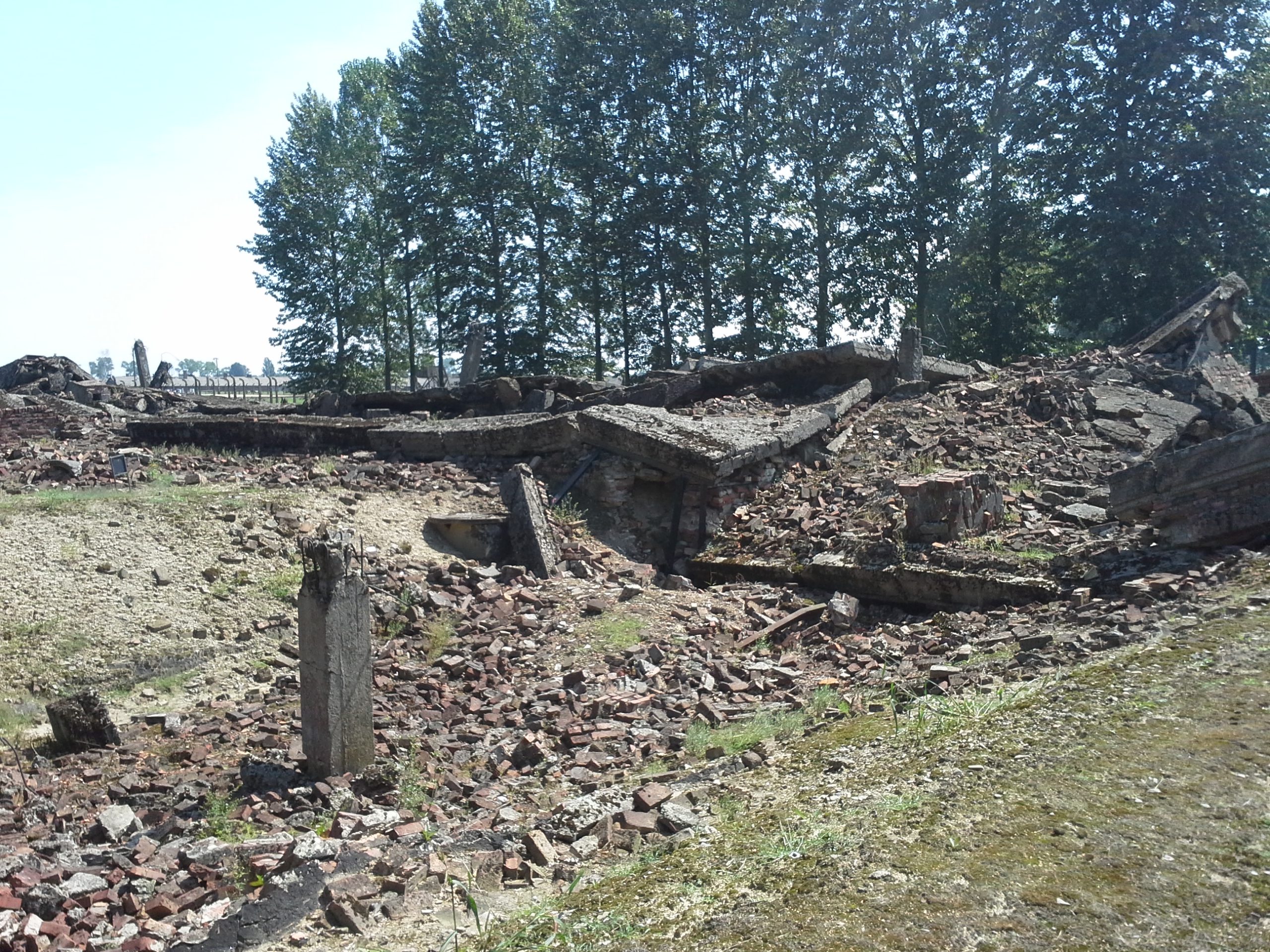
Ruins of a crematory. Birkenau had four crematories. After the victims were gassed their bodies were cremated and their ashes dumped in nearby fields. The crematories were blown up by the German authorities shortly before the camp was evacuated in January 1945.
Birkenau was liberated by the Soviet army in January 1945.
Below: Soviet soldiers at Birkenau, 1945. (source: Bing.com)
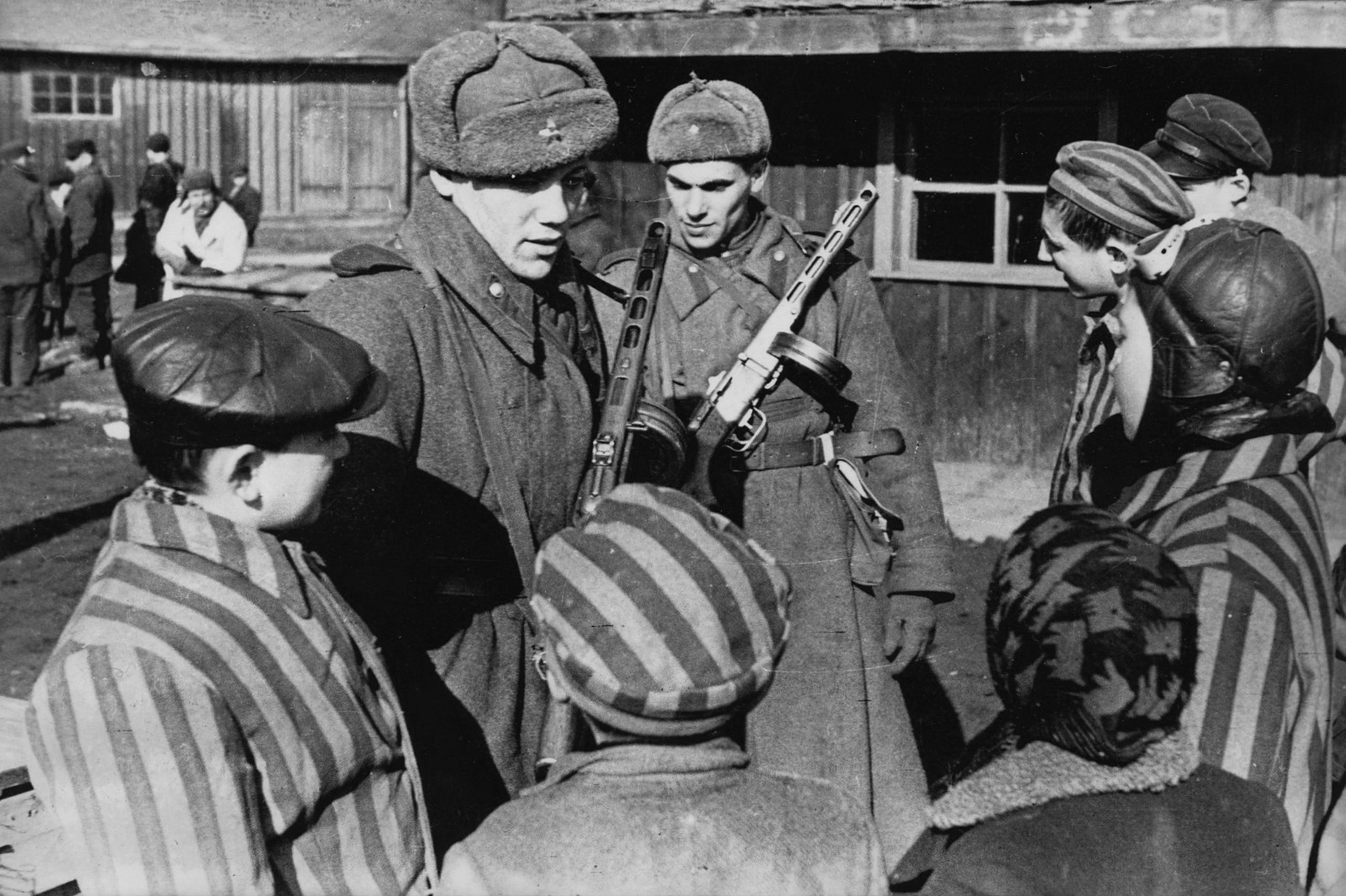
Hoess, Moll and others involved with the operation of the camp were later charged with war crimes. After the war gold teeth and jewelry continued to be found by local residents looting the camp in search of valuables. Out of the approximately 6,500 members of the SS who worked at Auschwitz approximately 750 were punished. For the vast majority of those employed at the facility, they eluded justice. As for Birkenau today, it is now a museum, open to the public.
Below: Auschwitz/Birkenau staff enjoying a moment of fun and relaxation, ca. 1944. Auschwitz/Birkenau employed about 6,500 persons. Most eluded justice. The three men in this pic were SS non-commissioned officers. The one at the left was an SS-Oberscharfuhrer, in the center an SS-Untersturmfuhrer, and at the right with the accordion, his rank is unknown. However, it is highly unlikely that he was an officer. No SS officer would ever be seen playing a musical instrument in public. The women are SS auxiliaries. (source: Bing.com)
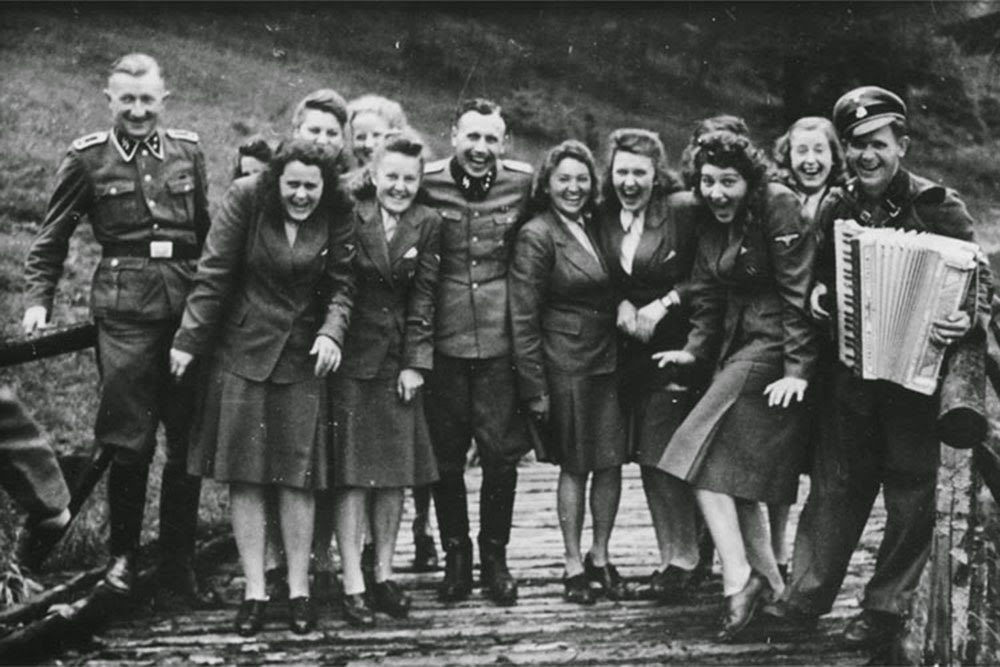
Below: SS officers at Birkenau. Left to right: Richard Baer, Rudolf Hoess (commandant), and Karl Hocker (source: thevintagenews.com, 2016)
